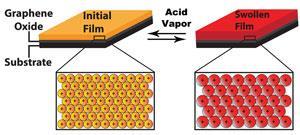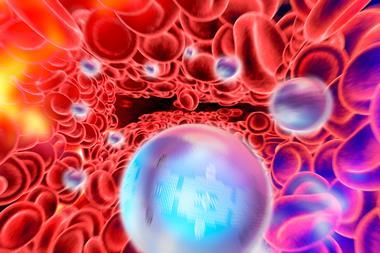Cephalopod-inspired surface can tune its reflectivity using chemical stimuli

Using a protein from colour-changing squids, US scientists have created a coating that reflects infrared and lets objects mimic the infrared signature of their surroundings. The developers of the coating say that it could be used to create camouflage that would make people and vehicles invisible to infrared cameras.
Conventional visual camouflage can help the wearer blend in to the background, but it is notoriously difficult to hide from infrared sensors. ‘We’re trying to develop something that you could essentially use as reconfigurable infrared reflective paint so that you’d be able to disguise yourself,’ says Alon Gorodetsky from the University of California, Irvine, who led the research. ‘There’s really not much out there in terms of inexpensive, biodegradable non-toxic materials that can be changed on the fly.’
The team turned to some of nature’s best camouflage artists – the cephalopods – for inspiration. Pencil squids, for example, have specialised skin cells that can reflect both visible light and infrared. These cells have highly folded membranes, which form finger-like lamellae containing a protein called reflectin, which has a high refractive index. Layers of extracellular space between the lamellae have a low refractive index, so combined these structures act like Bragg reflectors. These layered structures produce strong colours, and the squids use muscular contractions to alter the spacing of these layers to rapidly change colour.
The team used thin films of reflectin to make a stripped down mimic of squid skin. The ‘skin’ was created by depositing the protein on a graphene oxide layer, which was itself laid down on a glass or silica substrate. The graphene oxide acts like the dark pigments found under the reflectin-containing layers of squid skin, acting as permanent contrast to the colour-changing cells. They then investigated how different substances could chemically alter and ‘tune’ the film’s structure and reflective properties.
‘You can swell these types of film and get them to shift their colouration,’ explains Gorodetsky, ‘so we screened different stimuli to see how far we can actually shift it across the visible and infrared spectrum.’
They found that exposing the film to acetic acid vapour caused it to swell enough to reflect infrared radiation, allowing it to ‘disappear’ when viewed with an infrared camera. The technology is still at an early-stage, but Gorodetsky thinks it shows promise as a next-generation camouflage coating. ‘It hits the range that you would typically use for an infrared imaging camera, so in a proof of concept experiment it works.’
The next challenge, he says, is to find a more user-friendly trigger. ‘You wouldn’t necessarily want to use acetic acid – it’s effectively dousing yourself with very concentrated vinegar!’ he says. ‘We’d like to find another stimulus – perhaps something mechanical or electrical – to induce the same change in colouration.’
Rajesh Naik from the US Air Force Research Laboratory in Dayton, who also works on reflectin thin films, says this study highlights the benefits of exploring these proteins. ‘The more we know about their properties outside the organism, the better we will understand and design materials with interesting optical characteristics,’ he says.












No comments yet